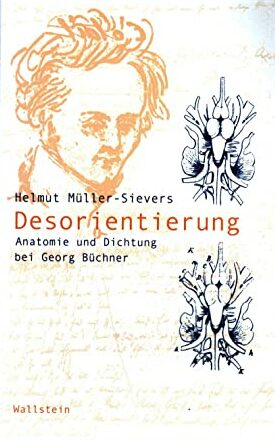By Helmut Müller-Sievers (NHC Fellow, 1994–95)

Göttingen, Germany: Wallstein, 2003
From the publisher’s description:
The most extensive surviving text by Georg Büchner is the "Treatise on the Barbel's Nervous System" from 1836. Helmut Müller-Sievers places it at the center of his investigations into the connection between anatomy and poetry. We begin with reflections on the problem of orientation in the 18th and early 19th centuries, which he illuminates in terms of the history of science and philosophy. It is of great importance for the nerve and brain research of the time because the question was negotiated how symmetrical objects, including the brain, can be oriented in space in such a way that left and right, up and down, front and back are unambiguous are set. The second chapter is devoted to the historical reconstruction of Büchner's "Treatise". Their goal was to explain the shape of the brain. Büchner initially tried to determine the number of cranial nerves of the barbel through the most precise anatomical description, and then to find a "primordial type" for the brain and the shape of the vertebrates in general through a comparative interpretation of the findings. For Büchner, however, there is no transition between these two types of explanation; they stand opposite each other like two different types of discourse. This disintegration of description and interpretation, of realism and imagination, of metonymy and metaphor can, according to Müller-Sievers, also be shown in Büchner's poetry. A third chapter tries to measure the poetic dimensions of a language in which the basic distinction between literal and transcription no longer applies and which is consequently interspersed with quotations.
To the series:
For a long time, the history of science saw itself as a kind of memory of the sciences. Today it is looking for its place in cultural history and sees its task not least in building bridges between the natural sciences and the humanities. The forms in which this happens have by no means been determined. You are the subject of a large experiment currently underway. The historical embedding of scientific knowledge, the view of the material culture of the sciences, of their objects and of the spaces in which they are represented calls for new forms of reflection, narration and presentation. The "History of Science" series published by Michael Hagner and Hans-Jörg Rheinberger is a forum on which such experiments are presented.
Subjects
Literature / Medicine / History of Medicine / History of Science / Poetry / German Literature / Abhandlung über das Nervensystem der Barbe / Georg Büchner /Müller-Sievers, Helmut (NHC Fellow, 1994–95). Desorientierung: Anatomie und Dichtung bei Georg Büchner = Disorientation: anatomy and poetry by Georg Büchner. Wissenschaftsgeschichte. Göttingen, Germany: Wallstein, 2003.